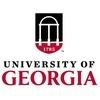Explore all the information on
Feed formulation
Welcome to the page about Feed formulation of Engormix; a source of knowledge on Feed formulation.
...
Comments : 0
Recommendations: 2
1. Introduction Pelleting is the most used thermal processing method in poultry industry. The aim of pelleting processing is to agglomerate ingredients particles by mechanical action, in combination with moisture, pressure and temperature. Broilers fed pelleted diets present greater feed intake, better feed conversion ratio and greater weight gain [1-3]. The positive effect of pelleting on broiler performance is partly due to improved nutrients digestibility [4], increased feed...
Comments : 5
Recommendations: 8
Due to the COVID-19, we have made the unfortunate decision to cancel this years symposium. We hope that everyone stays healthy during this time of crisis. Please mark your calendars for 2021 as this will mark our 25th Anniversary symposium and we will be coming back to where it started in bourbon country, Louisville, Kentucky. The...
Comments : 0
Recommendations: 0
.jpg&w=3840&q=75)

Benefits of rendered products on sustainability
Suggested link
Yangchun Cao (Northwest A&F University) shared his research and talked about the effect of digestive processes and liver metabolism of lipogenic precursors on milk fat synthesis, during the 8th Symposium on Gut Health in Production of Food Animals in St. Louis, USA....
Comments : 1
Recommendations: 4
...
Comments : 0
Recommendations: 0
Wilmer Pacheco (Auburn University) talked about reduction of incidence of proventriculitis as one of the positive results of this trial, during IPPE 2020 in Atlanta, USA....
Comments : 1
Recommendations: 2
Introduction Lignocellulosic plant biomass is the most abundant raw material on Earth, composed of approximately 40–50% cellulose, 20–40% hemicellulose and 20–35% lignin [1]. In particular, the Oil Palm Industry, with plantations spreading across Asia, Africa and Latin America, creates vast waste streams made up of empty fruit bunches (EFB), oil palm fronds and trunks, the disposal of which is a major environmental problem, often burnt as a means of disposal,...
Comments : 0
Recommendations: 0
.jpg&w=3840&q=75)

Benefits of rendered products on sustainability
Suggested link
...
Comments : 0
Recommendations: 1
Introduction Egypt is considered one of the most vulnerable countries to the potential impacts of climate change. High population density and growth and the rapid spread of unplanned urbanization place considerable pressures on the limited country’s land and water resources. In this respect, climate change studies predict a reduction in the productivity of two major crops in Egypt-wheat and maize by 15% and 19%, respectively by 2050 [1]. Livestock is one of the...
Comments : 0
Recommendations: 0
Yang Lin (University of Georgia) explained the results of her research on growth performance, nutrient utilization and short-chain fatty acid profile in broilers, during IPPE 2020 in Atlanta, USA....
Comments : 0
Recommendations: 0
Sandro Cerrate (Poultry Nutritionist Consultant-Credinser) discussed diet formulation and feed conversion, during IPPE 2020 in Atlanta, USA....
Comments : 0
Recommendations: 5
.jpg&w=3840&q=75)

Benefits of rendered products on sustainability
Suggested link
Antonio Beitia (University of Arkansas) explained the findings of his research on feed utilization and uniformity, during IPPE 2020 in Atlanta, USA....
Comments : 0
Recommendations: 0
Maria Teresa Capucchio and Elena Colombino (University of Turin) shared the stage to present two studies on the benefits of insects as a protein source on animal feed, during the 8th Symposium on Gut Health in Production of Food Animals in St. Louis, USA....
Comments : 1
Recommendations: 3
Rhodimet Itw techno Practical Benefits - Liquids are already a major part of the daily routine of feed mills and recent feed mills projects are choosing liquids for their assets. Marc Perel, Solution Application Manager, at Adisseo gives some explanations in the video....
Comments : 0
Recommendations: 2
Ana Villegas (University of Georgia) shared the results of this study on crude protein concentration in the diet under challenge conditions, during the 8th Symposium on Gut Health in Production of Food Animals in St. Louis, USA....
Comments : 1
Recommendations: 11
.jpg&w=3840&q=75)

Benefits of rendered products on sustainability
Suggested link
The 2020 International Production & Processing Expo (IPPE) will offer a new research methods workshop, titled Feed Formulation Tools and Techniques. The workshop, scheduled for 8 a.m. to 10 a.m. on Thursday, Jan. 30, 2020, will provide students and researchers with hands-on experience for using basic tools and techniques needed to properly balance poultry and pig diets. The two-day workshop is a collaboration between the U.S. Poultry & Egg Association (USPOULTRY) and the University...
Comments : 0
Recommendations: 0
...
Comments : 0
Recommendations: 1
Introduction Intensification of ethanol production has led to an increase in the price of animal feed, which produces a reduction in profitability affecting all sheep producers in Mexico. As a result, producers start looking for new alternatives to feed their animals. Grain legumes have been one of the strategies to alleviate the effect of under nutrition (Dixon and Hosking 1992). Recently, cull pinto beans (CPB; Phaseolus vulgaris L.) has become a solution for the market crisis...
Comments : 1
Recommendations: 0
Peter Chrystal (Baiada) gave a presentation on different tests, models and tools to better analyze feed formulation and poultry nutrition, during the Latin American Poultry Congress in Lima, Peru....
Comments : 4
Recommendations: 16


.mp4&w=3840&q=75)

.jpg&w=3840&q=75)























